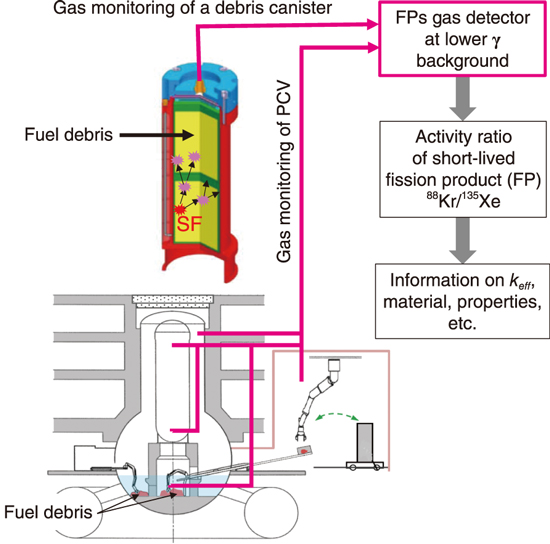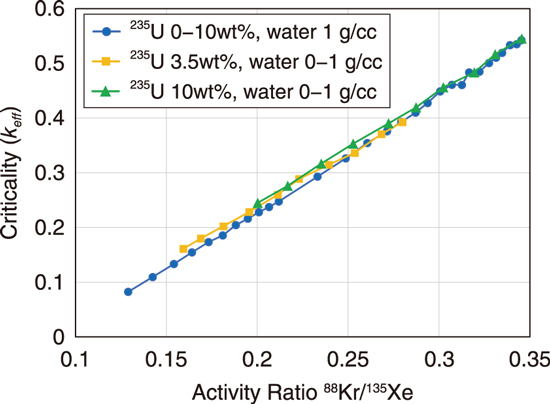
Fig.1-4 Concept of criticality evaluation by noble-gas monitoring

Fig.1-5 Correlation between activity ratio and neutron multiplication
For the safe retrieval and management of fuel debris in the TEPCO’s Fukushima Daiichi NPS, it is important to evaluate the criticality and quantity of nuclear materials in fuel debris. The fuel debris continuously produces short half-life fission products (FPs) such as 88Kr and 135Xe by spontaneous fission (SF) and induced fission (IF) reactions. The amounts of 88Kr and 135Xe produced in the SF and IF reactions are different.
Using this characteristic, as shown in Fig.1-4, we developed a method to evaluate the criticality (neutron multiplication and quantity of fuel material) of fuel debris with unclear material composition in the primary containment vessel (PCV) or fuel debris storage canister. First, gas is collected from a PCV or fuel debris storage canister; subsequently, the activity ratio of 88Kr and 135Xe is measured remotely at a place with low background activity. Next, by predicting the correlation between the 88Kr/135Xe activity ratio and the neutron multiplication factor in advance via calculations, the criticality of the system can be evaluated.
To implement this method, it is necessary to predict accurately the correlation between the quantities of these FPs produced in the subcritical system and the neutron multiplication factor in advance. We developed a subcritical depletion calculation code, for the first time in the world, based on the Monte Carlo method that can evaluate the correlation between the amount of the FPs and the neutron multiplication factor considering the SF and IF reactions. The code development was performed by incorporating the theory of the SF and IF reactions, algorithm, and necessary nuclear data into the original code OpenMC of the Massachusetts Institute of Technology.
Fig.1-5 shows a calculation result obtained using the new code for the fuel debris storage canister. In the calculation, the quantity of 235U and water content in the fuel debris, which are difficult to be measured, were varied as parameters, and the correlation between the 88Kr/135Xe activity ratio and the neutron multiplication was calculated by three-dimensional Monte Carlo simulation. It was shown that the neutron multiplication factor changes linearly regardless of the parameters and that it is possible to evaluate the criticality from the measured 88Kr/135Xe activity ratio.
We expect the newly developed code will be used in the future for designing systems for monitoring the criticality in the PCV and for developing nondestructive measurement technologies for fuel debris.
(Eka Sapta Riyana)